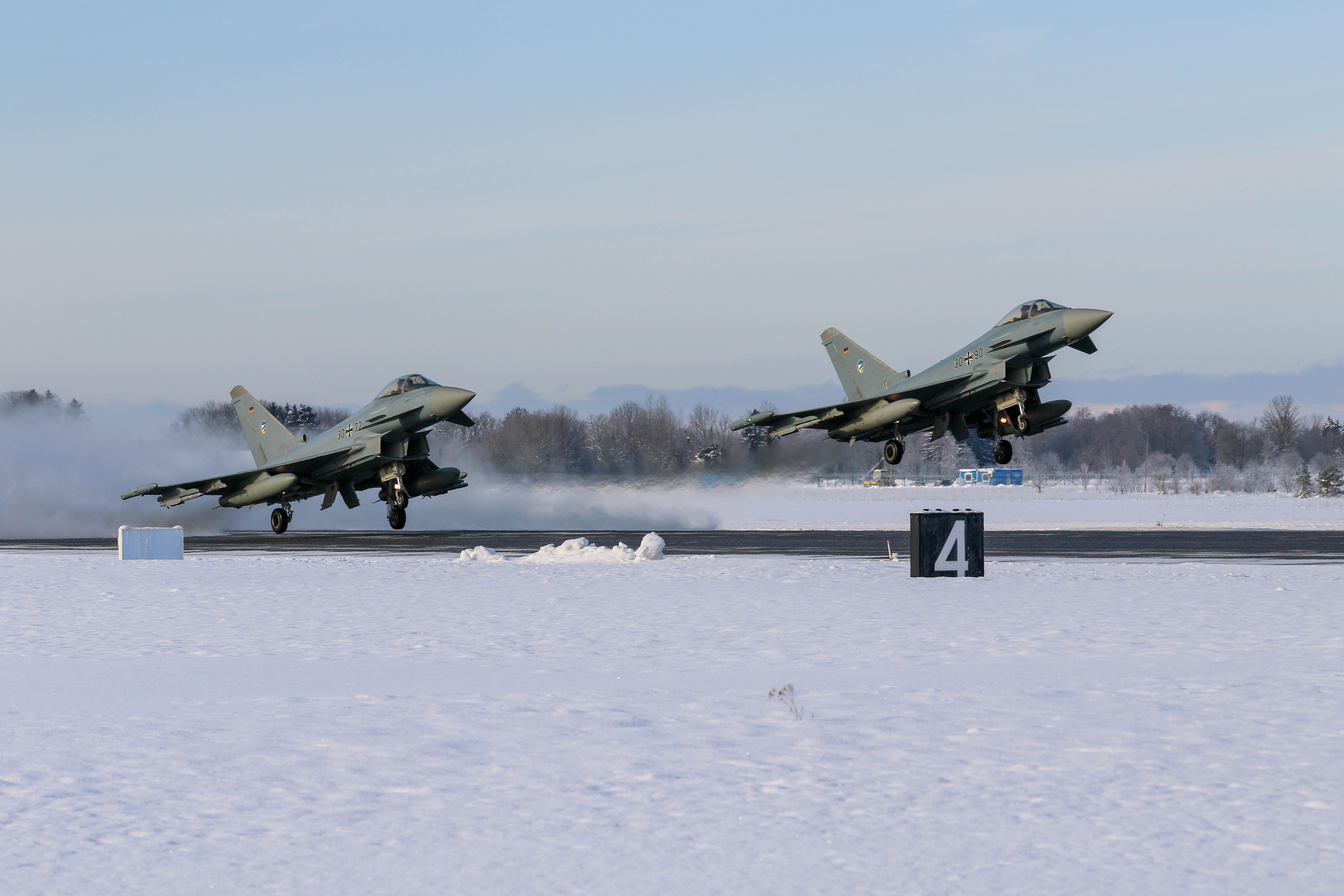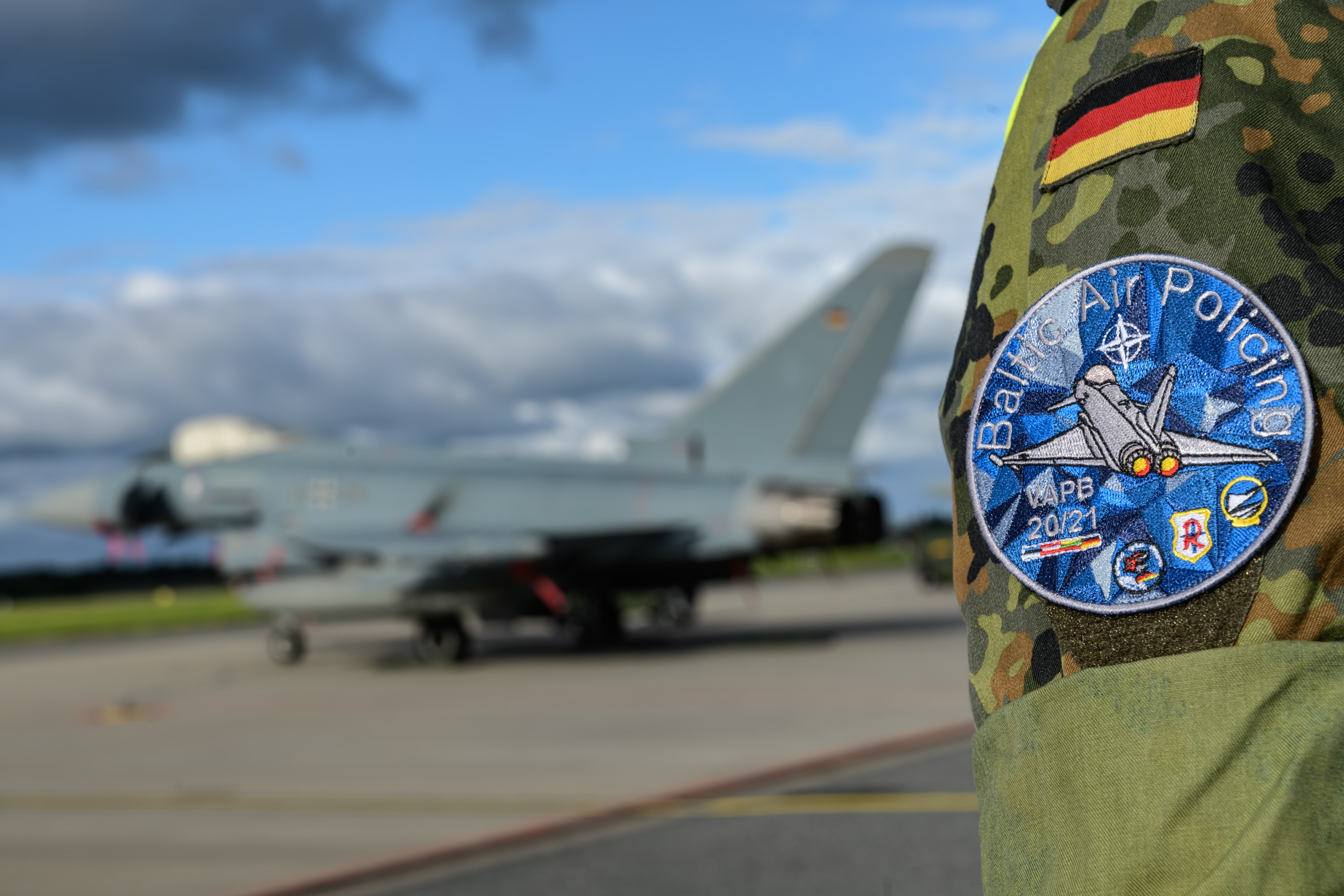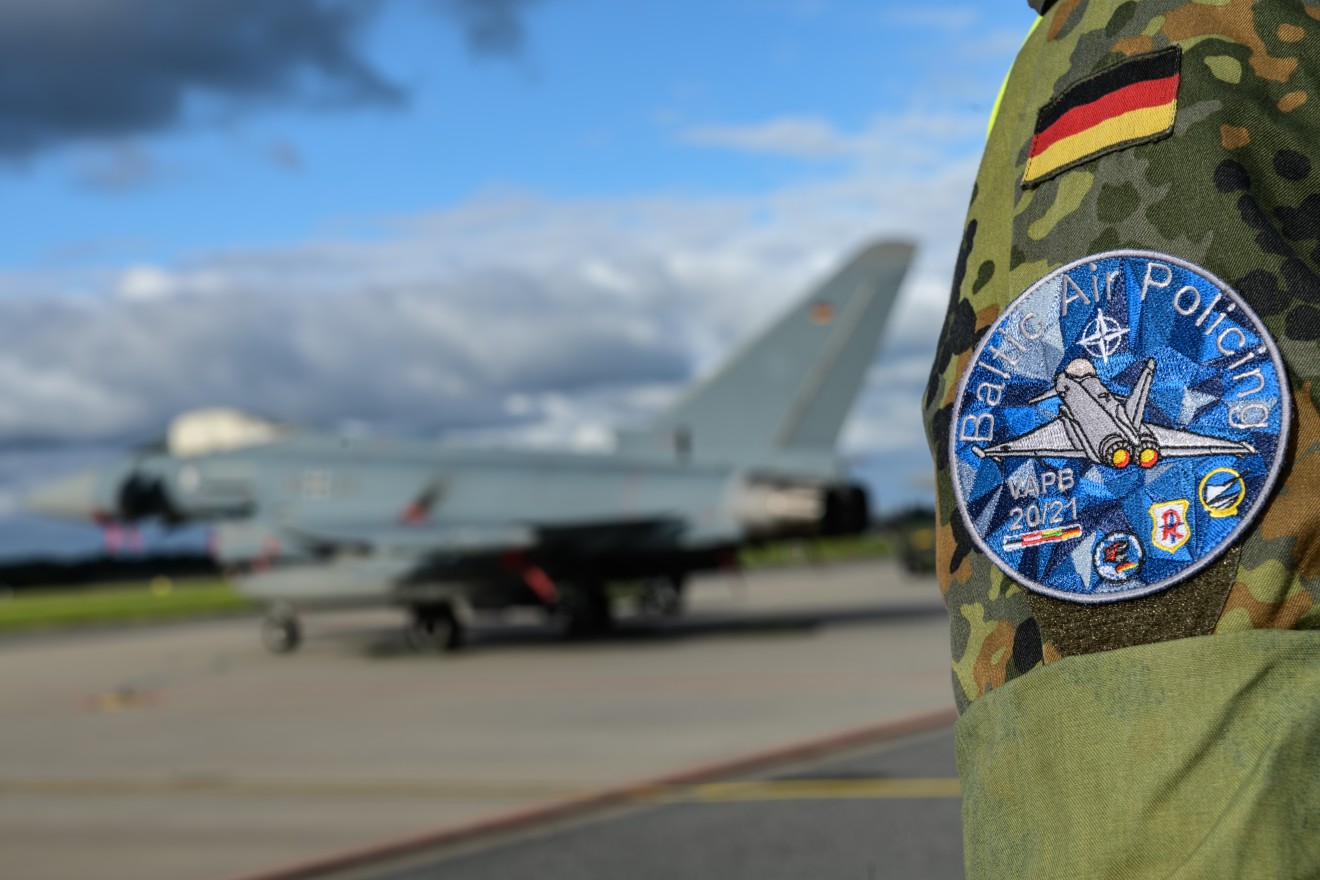
German Eurofighter Typhoons at Ämari Air Base, © Luftwaffe.
The Bundeswehr has been involved in the Baltic Air Policing since 2005 and the first Eurofighter Typhoons took part in 2009. Since 2014, the German Armed Forces, have sent a detachment every year. In recent years it has been helping develop a new ‘Plug and Fight’ concept to enhance the interoperability between the Eurofighter Typhoon nations within the Alliance.
Created jointly by the German Air Force and the UK Royal Air Force, ‘Plug and Fight’ sees small contingents supplement the forces of the respective lead nation. It is based on the existing capabilities of the lead nation to reduce the logistical effort.
The first such mission was a collaboration between the Bundeswehr and the UK Royal Air Force in 2019 in Ämari, Estonia, followed by another improving step in 2020 at the same location.
Last year (2021) the two forces combined again, for the first time at Constanta in Romania. Earlier this year, the Bundeswehr took part in the NATO enhanced air policing south mission in Romania with a new partner — the Italian Air Force.
In this case, three Eurofighters from the Tactical Air Force Squadron 74 from Neuburg an der Donau reinforced the operational contingent of the Italian Aeronautica Militare. The rotation took place between February and March in 2021.

Combat aircraft from the alliance nations were stationed at the Romanian military base Mihael Kogalniceanu near the city of Constanta on the Black Sea.
True to the ‘Plug and Fight’ concept German and Italian aircraft completed Quick Reaction Alert protective flights together.
The usual two-ship formation was composed of an Italian and a German Eurofighter. The two nations were able to harmonize seamlessly as they had already taken part in joint training flights over Baltic airspace at the beginning of 2021.
‘Plug and Fight’ is seen as a stepping-stone towards a homogeneous, bi-national task force and will be an important focus during the upcoming eight month enhanced Baltic Air Policing commitment beginning in August this year (2022).
In order to include all the NATO Eurofighter nations in the concept, a contingent of Spanish Air Force aircraft will link up with the Luftwaffe in Ämari in autumn.
WHAT IS PLUG AND FIGHT?
In practical terms it sees an existing deployment from one of the two nations, supplemented by the second nation with a minimal technical and logistical footprint. The augmenting nation uses as many of the lead nation’s resources as possible, including personnel support and ground support equipment. The objective behind is to establish the capability to deploy, command and control Eurofighter contingents. In addition, it allows air forces to complement each other during exercises and operational commitments through short-notice provision of small detachments — hence Plug and Fight capability.
WHAT ARE THE BENEFITS?
Plug and Fight provides significantly increased interoperability, within a few days multinational military operations can be conducted. It offers:
High flexibility
Quicker reaction times
Reduces costs
Reduces logistical resources
